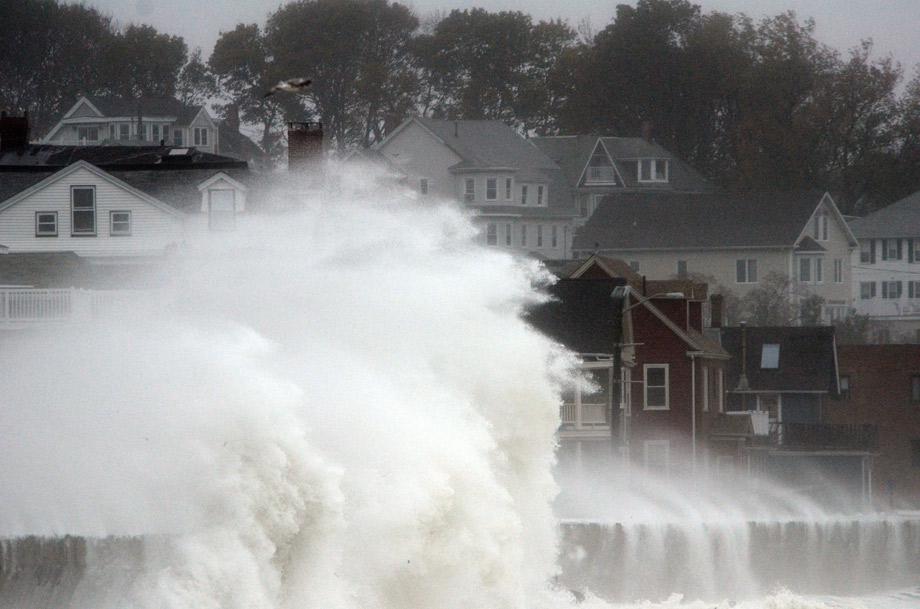Climate scientist Kevin Trenberth of the National Center for Atmospheric Research says climate change can add to the freak storm’s fury. Sea-level rise can amplify the damage from catastrophic storms.
Lisa Palmer: Most scientists seem to be reluctant to tie a single storm to climate change, but sea level rise is much more clearly climate-related and disastrous. It doesn’t take much for an extreme event with a little bit of extra sea level to overtop coastal defenses. What should we expect with Sandy?
Kevin Trenberth: You have this picture sometimes that sea level is going up at this slow rate of 3 millimeters per year. You stand there and you watch, and finally it gets up to your toes or it gets up to your ankles. You think finally, I better do something about this. That’s not the way it works. Sea level-rise happens episodically. One minute it looks benign and then a week later suddenly a storm or hurricane comes along like Sandy, and there are major waves, 20-foot waves, and major storm surge, and tremendous damage occurs.
LP: Is Sandy directly a result of climate change?
KT: Most of what is going on with Sandy is weather, and there is a large chance element to it, but it is all occurring in an environment where the ocean is a bit warmer, the air above the ocean is warmer and moister, and that is fuel for the storm and especially adds to the risk of heavy rainfalls and flooding.
The predominant thing is hybrid storms are chance events. They are a crap shoot. With hurricanes there is a very strong environmental component to it. Hurricanes are very dependent on the environment. Therefore, changes in the environment modify the hurricanes. There are higher sea temperatures now, more moisture in the atmosphere, and there is a risk that the storm will be more intense and possibly a little larger.
LP: What is climate change doing to this storm?
KT: The thing that the climate is doing is that the sea temperatures are higher. There is more moisture feeding into the storm. That adds to the rainfalls. The rainfalls could be 5 to 10 percent higher as a consequence of climate change. The sea level is running a little bit higher. Sea level is going up a foot a century at the current rate. Over the last 20 years sea level has gone up 2 1/4 inches. That doesn’t sound like a lot, but it goes back to my first point that it gets amplified in coastal regions. There are a lot of other aspects feeding into Sandy.
LP: How does Sandy amplify rainfall and the effects of sea level rise?
KT: The sea temperatures along the coast are about 5 degrees Fahrenheit higher than normal. About 1 degree of that you can blame on climate change, and the rest is natural variability. The warmer waters are amplifying the rainfall aspects and the nature of the storm. Plus, the water from the Atlantic is piling up on the Atlantic coast, and so even before you get to the storm surge, the sea level is already running one or two feet higher than normal because the easterly weather conditions have shaped up this way. Then you have the storm surge on top of that. With the winds and so on, this is where the forecast of more than 10 feet in the vicinity of New York City is coming from.
Even if the storm just happened to do exactly the same things it’s doing anyway, the fact that sea level went up 6 inches last century, and that sea level is somewhat higher now than it has been at any time in recent history, means that all of the coastal regions are experiencing new levels of pounding and erosion. I expect there could be some quite surprising events along some of the coast as a result of that.
